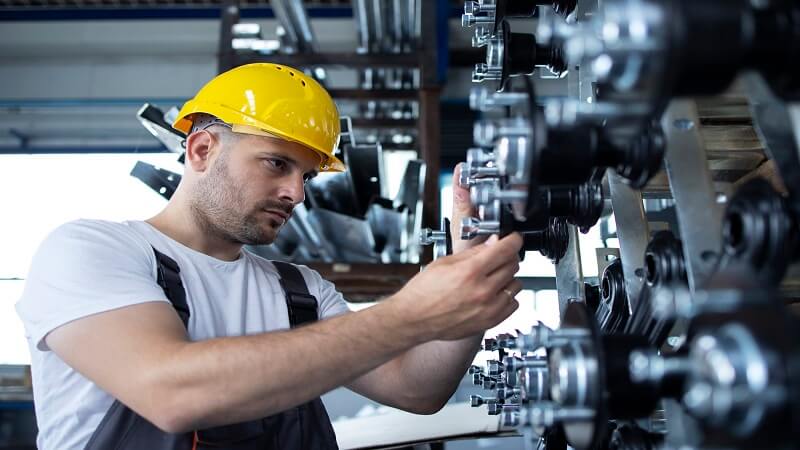The quality of industrial parts can make or break your operations. While the allure of lower upfront costs may tempt businesses to choose cheaper options, poor-quality parts often come with hidden costs that can harm your bottom line. From increased maintenance expenses to reduced productivity, substandard parts can create headaches that far outweigh any initial savings.
Initial Purchase Price vs. Total Cost of Ownership
When procuring industrial parts, it’s easy to focus on the initial purchase price. After all, saving money upfront feels satisfying. However, this approach can be misleading, as the total cost of ownership (TCO) often tells a very different story.
Cheap, low-quality parts may save you a buck initially, but their short lifespan and susceptibility to damage can lead to costly replacements, repairs, and downtime. On the other hand, high-quality parts may cost more upfront but deliver better durability, performance, and reliability over time.
Impact on Productivity
Low-quality parts are productivity killers. When a crucial component breaks or malfunctions, the cascading effects on your operations can be significant.
Substandard parts often fail to perform under pressure, leading to unexpected equipment failure. Every minute your line is shut down due to faulty parts, your business incurs lost revenue and jeopardizes on-time delivery to customers.
For example, imagine a production line that stops because of a poorly designed pipe valve restricting flow. This isn’t just a minor inconvenience; it’s a domino effect impacting labor, output, and even client satisfaction. Reliable parts ensure smoother operations, minimizing these risks and keeping your business running like a well-oiled machine.
Maintenance and Repair Expenses
Frequent maintenance and repairs are some of the most noticeable hidden costs of poor-quality parts.
Low-quality industrial components often wear out quickly or become damaged under routine use. Unlike their well-crafted counterparts, inferior parts necessitate more frequent servicing, draining both time and money from your operations.
For example, poorly constructed valves could develop cracks or leaks that require immediate repair. Compound these issues across an entire facility, and you’re looking at a significant hit to your maintenance budget—not to mention the time lost coordinating and conducting repairs.
When you invest in high-quality parts from the start, you’re not just saving on potential repairs; you’re investing in peace of mind.
Safety Risks
Safety is an area no business can afford to compromise on, and using poor-quality industrial parts increases the risk of accidents and injuries on-site.
Low-grade materials, poor construction, and lack of reliability can all lead to equipment failure, posing serious safety hazards. Investing in well-tested, high-quality parts reduces the likelihood of mishaps and fosters a safer, more reliable working atmosphere for your team. Keeping your employees safe not only avoids costly liability issues but also demonstrates a fundamental commitment to workplace well-being.
Longevity and Replacement Frequency
High-quality industrial parts last longer. It’s as simple as that.
While low-cost components may save you short-term cash, they often require frequent replacements due to premature wear and tear. This constant need for new parts adds up, especially in industries with high operational demands.
Take industrial pipe valves as an example. A high-quality industrial pipe valve, such as those available in Utah, made from superior materials and engineered to handle pressure, consistently performs above expectations. On the flip side, a poorly manufactured valve wears out quickly, leading to regular replacements.
With long-lasting, reliable parts, your business saves considerable time, money, and energy typically spent sourcing and installing replacements.
Warranty and Support
A good warranty, coupled with reliable customer support, can make a world of difference when sourcing industrial parts. Substandard parts often lack robust warranties or don’t come with the technical assistance necessary to resolve issues.
Investing in high-quality parts from reputable suppliers ensures you’re covered in case of defects, malfunctions, or other unexpected challenges. Comprehensive support protects your investment and helps minimize operational disruptions.
Knowing you have access to professional guidance or timely replacements can ease the stress of unforeseen problems and foster confidence in your procurement decisions.
The Case for Quality
When it comes to sourcing industrial parts, the lesson is clear: prioritize quality over cost. From reducing safety risks to improving operational productivity, choosing high-quality components provides value far beyond their premium price tag.
Investing in quality is an investment in your business’s longevity, reputation, and success. Don’t settle for substandard parts that will only drain your time, money, and resources.
Conclusion
Understanding the value of quality industrial parts is the first step toward making smarter sourcing decisions. Choose trusted suppliers who provide high-quality components that meet industry standards and include robust warranties and support. Keep in mind that low upfront costs often lead to higher expenses over time. Focus on the total cost of ownership (TCO) and ensure your business is equipped with reliable, durable, and safe industrial parts. This not only enhances performance but also provides long-term peace of mind.
